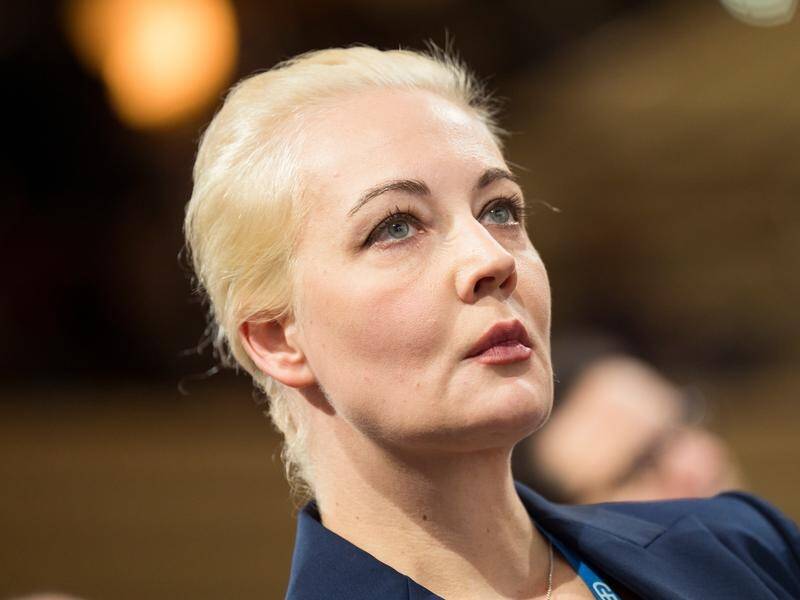
Navalnaya’s message comes as Russian authorities say an investigation into Navalny’s death has been extended and the cause remains ‘unknown’.
Yulia Navalnaya has accused Russian President Vladimir Putin of killing her husband, Alexey Navalny, and pledged to continue the late opposition leader’s fight for a “free Russia”.
“Three days ago, Vladimir Putin killed my husband, Alexey Navalny,” the widow said in a nine-minute video released on Monday.
“By killing Alexey, Putin killed half of me – half of my heart and half of my soul. … But I still have the other half, and it tells me that I have no right to give up. I will continue the work of Alexey Navalny, continue to fight for our country,” she said as she fought back tears.
“I want to live in a free Russia. I want to build a free Russia,” Navalnaya said.
“I urge you to stand next to me,” she said. “I ask you to share the rage with me. Rage, anger, hatred towards those who dared to kill our future.”
Navalny died on Friday at the age of 47 in the IK-3 maximum security prison colony in Kharp, a town north of the Arctic Circle about 1,900km (1,200 miles) northeast of Moscow, where he was serving a 19-year sentence on charges of extremism.
The circumstances surrounding the death of the opposition leader remain murky. Moscow says Navalny felt sick and fainted after a walk and medics’ efforts to resuscitate him failed.
Three days after his death, Navalny’s family has not been allowed to see his body.
The prison colony told Navany’s mother on Saturday that her son’s body was in a morgue in Salekhard, a town near the prison. After a family visit there, Kira Yarmysh, a Navalny family spokesperson, said the body was not in the morgue.
On Monday, Russian authorities informed Navalny’s mother and lawyers that an investigation into his death “has been extended” indefinitely, adding that the cause of the death is still “unknown”, Yarmysh wrote on social media.
Navalnaya accused Russian authorities of hiding Navalny’s body and of waiting for traces of a Novichok nerve agent to disappear from his body.
Independent media outlet Mediazone obtained footage showing four vehicles, including those of the penitentiary service, crossing the only road linking Labytnangi, close to the prison, with Salekhard. According to the media outlet, the unusual convoy suggests that Navalny’s body was being transported to Salekhard.
The lack of clarity over the death of the opposition activist – who appeared in good health and cracking jokes with a judge just a day before his death – has led many Western leaders, including US President Joe Biden, to place the responsibility of his death on Putin.
European Union foreign policy chief Josep Borrell said on Monday that Putin would be held accountable for Navalny’s death and he expected EU member states to propose new sanctions on those directly responsible for Navalny’s treatment, including officials in Russia’s prison system.
At a meeting of EU foreign ministers in Brussels, German Foreign Minister Annalena Baerbock said the diplomats would “initiate further sanctions measures” over Navalny’s death.
The Kremlin on Monday called Western accusations over Moscow’s involvement in Navalny’s death “boorish” and said “all necessary measures are being taken”.
“In conditions where there is no information, we consider it absolutely inadmissible to make such, let’s say, frankly boorish statements,” Kremlin spokesperson Dmitry Peskov told reporters.
Navalny, a former lawyer, rose to prominence campaigning against corruption. He was known for his fiery rhetoric at public protests and in courts and his team’s elaborate video investigations into state graft.
After the news of his death, thousands of people braved winter temperatures in Russia to pay him tribute. More than 360 people were arrested across 39 cities, according to the OVD-Info rights group, as they laid flowers at monuments to victims of political repression and at ad hoc memorials.
The rights group launched a petition campaign demanding the Investigation Committee hand over Navalny’s body to his family. More than 50,000 people have signed the document.

